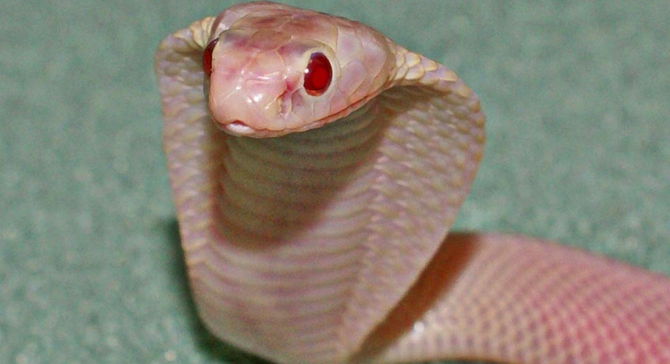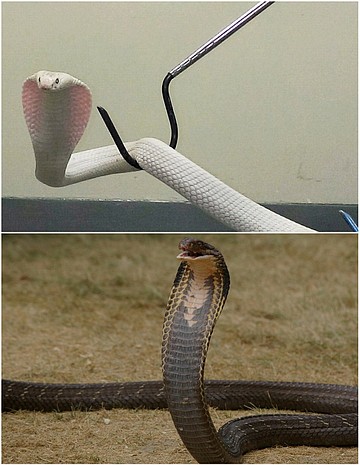 Facebook
Facebook
 X
X
 Instagram
Instagram
 TikTok
TikTok
 Youtube
Youtube

ASKING YOU TO PLEASE STOP THAT SNIGGERING, SAN DIEGO ZOO — Scientists today released their initial findings on Willy, the albino monocle cobra captured in Thousand Oaks and transported to the San Diego Zoo two weeks ago.
"Mostly, I'm just glad we've got him here in a controlled environment," said lead researcher Walter Hiss. "Albinos are often weaker than their more colorful counterparts, and Willy is no exception. There are even times when, confronted with a provocative situation, he has trouble holding himself erect. Nature can be cruel sometimes. It's a good thing he found his way to the suburbs. I don't think he would have survived in a harsher, wilder habitat."

Besides his general weakness, said Hiss, Willy is "fully 25 percent smaller than a traditionally pigmented monocle cobra. And astonishingly, it's almost like he's aware of it. We put him into the container where we keep the other cobras, and he immediately curled himself up and hid in a corner. It was only after we perched him on a rock at the top of the enclosure that he felt confident enough to uncoil. But even when he did, he was noticeably hostile toward the other snakes down below. We're hoping that prolonged contact will help to socialize him, but it could just lead to violence."
It has not yet been determined whether the same genetic anomaly which causes the cobra's white coloring also inhibits its overall length and thickness. But Hiss and his team have already noted that Willy's venom glands, while intact, are abnormally shriveled, and produce "venom of relatively little potency."


ASKING YOU TO PLEASE STOP THAT SNIGGERING, SAN DIEGO ZOO — Scientists today released their initial findings on Willy, the albino monocle cobra captured in Thousand Oaks and transported to the San Diego Zoo two weeks ago.
"Mostly, I'm just glad we've got him here in a controlled environment," said lead researcher Walter Hiss. "Albinos are often weaker than their more colorful counterparts, and Willy is no exception. There are even times when, confronted with a provocative situation, he has trouble holding himself erect. Nature can be cruel sometimes. It's a good thing he found his way to the suburbs. I don't think he would have survived in a harsher, wilder habitat."

Besides his general weakness, said Hiss, Willy is "fully 25 percent smaller than a traditionally pigmented monocle cobra. And astonishingly, it's almost like he's aware of it. We put him into the container where we keep the other cobras, and he immediately curled himself up and hid in a corner. It was only after we perched him on a rock at the top of the enclosure that he felt confident enough to uncoil. But even when he did, he was noticeably hostile toward the other snakes down below. We're hoping that prolonged contact will help to socialize him, but it could just lead to violence."
It has not yet been determined whether the same genetic anomaly which causes the cobra's white coloring also inhibits its overall length and thickness. But Hiss and his team have already noted that Willy's venom glands, while intact, are abnormally shriveled, and produce "venom of relatively little potency."
Comments